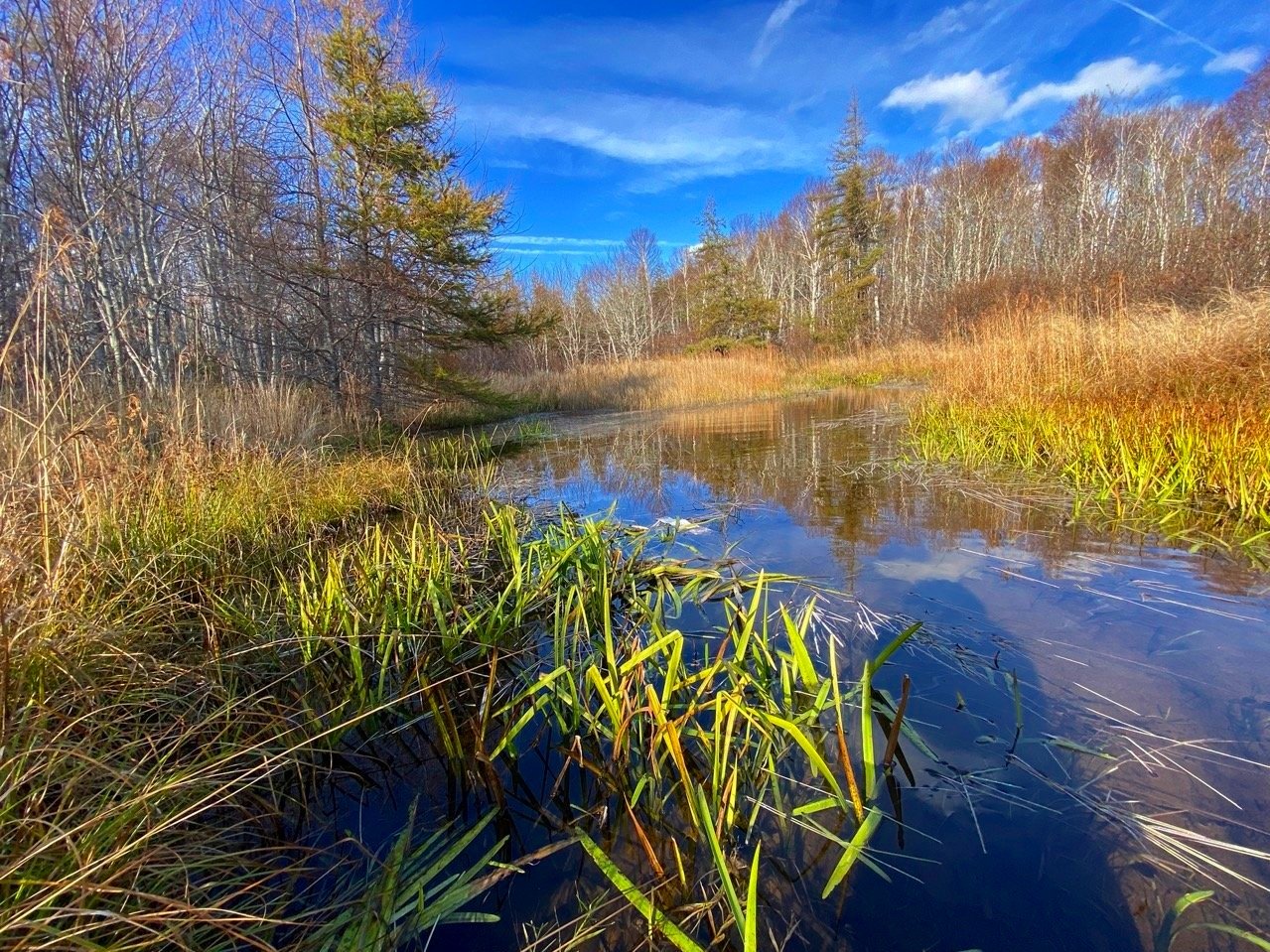
Monitoring and Research
Wetlands
Coastal and freshwater wetlands are vital ecosystems that help with flood prevention, and carbon sequestration, and provide habitat for numerous species. At ACAP Cape Breton, we strive to support and participate in the protection, restoration, and stewardship of this critical habitat for future generations.
Are you looking to dip your toes in a wetland of knowledge? Keep reading to learn more about these invaluable ecosystems.
What are the threats to wetlands?
-
As humans continue to develop along coastlines and near freshwater wetlands by building houses, businesses, or roads, wetlands lose their ability to adapt to their changing environment. Wetlands then become susceptible to sediment loss and erosion. Human development close to wetlands also adds the threat of exposure to pollution and other disturbances.
-
As sea levels continue to rise, it is becoming challenging for coastal wetlands to keep up with increased flooding. In its natural state, a coastal wetland would deal with water levels rising by accumulating sediment at the same rate as the water level rises. If water is rising at a faster rate than the coastal wetland can accumulate sediment, then the plants will drown, and the area will turn into open mud flats, which increases the potential for erosion.
Rising temperatures and inconsistent precipitation can lead to droughts, significantly influencing wetland health. As plant populations within the wetland decline due to lack of rain, freshwater wetlands become carbon sources rather than carbon sinks.
-
Invasive species are plants and animals introduced to an area that can aggressively spread and push out native species. Invasive species not only compete with native species for resources, but they can also expose the native species to new diseases and pathogens, resulting in the loss of native species and the take over of invasives.
Some invasive species found in wetlands include European Green Crabs, woodland angelica, purple loosestrife, and red-eared slider turtles.
Vegetation surveys help us learn more about what native and invasive plant species are present in an area.
Our team uses a variety of tools and equipment to conduct our research.
What are some different types of wetlands?
-
Freshwater wetlands are found inland, often along rivers, streams, lakes, and other fresh bodies of water. There are many different types of freshwater wetlands. You are probably familiar with some of them, such as swamps, marshes, and bogs. The difference between these ecosystems is the life that is found within them. For example, marshes are regularly covered in standing or slow-moving water. This results in plants that grow through the water, such as reeds and cattails. Marshes produce more organic matter than any other kind of wetland!
-
Salt marshes are a type of coastal wetland flooded by salt water daily. The vegetation in a salt marsh consists of plants that can tolerate high salt levels, also known as halophytes. This results in a lower plant diversity compared to other ecosystems. The soil of a salt marsh consists of thick layers of peat (decomposing plant material) and mud. Have you ever wondered why salt marshes smell like rotten eggs? That’s because bacteria that grow within the soil due to such low oxygen levels produce a sulfurous scent!
The Washbrook in Sydney, NS is one of many freshwater wetlands in Cape Breton. ACAP is working alongside the Washbrook Greenway Coalition to restore this urban wetland.
Coastal wetlands such as this one in North River can be found across the island, including in Port Morien, Dominion, and Point Michaud.




